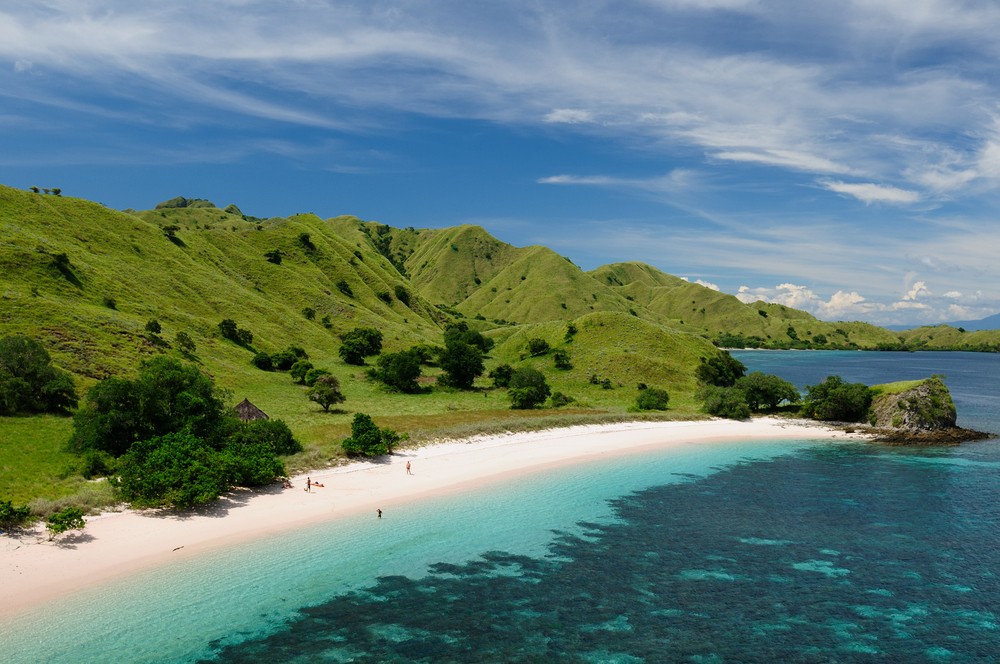Popular Reads
Top Results
Can't find what you're looking for?
View all search resultsPopular Reads
Top Results
Can't find what you're looking for?
View all search results16 fun facts about Komodo National Park you probably don't know
As a gem of East Nusa Tenggara, Komodo National Park boasts a rare combination of spectacular landscape and unique native creatures. Here are several facts you should know about Komodo dragons before visiting the park.
Change text size
Gift Premium Articles
to Anyone
A
s a gem of East Nusa Tenggara, Komodo National Park boasts a rare combination of spectacular landscapes and a unique native creature — the Komodo dragon, which can reach 2 to 3 meters in size.
Listed among UNESCO’s World Heritage Sites, the area is also a great destination for visitors who enjoy outdoor activities such as diving, snorkeling and trekking.
Planning a visit? Here are several fun facts you should know before you go.
1. Up to 5,965 Komodo dragons can be found in Komodo National Park, which covers three major islands, namely Komodo, Rinca and Padar. Komodo Island has at least 2,918 dragons, while the rest are scattered across Rinca Island (2,875), Gili Motang Island (92), Nusa Kuda Island (75) and Padar Island (five).
2. In addition to tourists, the park is also a popular destination for scientists and naturalists who want to study the animal's evolution, as Komodo dragons only exist in Indonesia. East Nusa Tenggara has the last population of the large lizards, which lived across Indonesia and Australia millions of years ago.
3. Park rangers don’t feed the dragons; they let them hunt animals such as goats and birds, just like in the wild.
4. Komodos live a solitary life. They don’t gather in groups and they prefer to hunt alone.
5. Being a cold-blooded animal, the dragons climb hills at the park to sunbathe in the morning, and then go back to shady areas to cool down.
6. Komodos can get stressed when there are too many people around. Rangers will immediately warn visitors to stay away when this happens.
7. The animals usually mate between June and July when females have reached the age of eight and males are seven. In September, females can lay up to 15-30 eggs after taking over nests made by brush turkeys and deepening the holes by two meters. Around 70-80 nests can be found on Rinca Island.
(Read also: Komodo National Park becomes popular destination for cruise liners)
8. To reduce the risk of predators such as snakes or boars preying on the eggs, female Komodo dragons dig several additional holes near their real nest in an attempt to camouflage it. These holes are so similar that even the mother Komodo can get confused in recognizing the real one.
9. The mothers incubate their eggs for three months and then leave the nest, only to return nine months later when the eggs are about to hatch. Interestingly, it is said that female Komodos only care about their eggs, not the juveniles.
10. Once hatched, newborn Komodos climb trees to avoid predators and survive by eating lizards, small snakes and staying in the trees until they reach 3 to 5 years of age.
11. Komodo dragons are cannibals.
12. When feeling threatened, Komodos can make sudden attacks. It is advised to stay quiet if you are approached by an angry Komodo. Don’t panic and don’t move. Stay still, as Komodos can run very vast and you will not be able to get away from. Follow every step your ranger tells you in this kind of situation.
(Read also: Komodo Airport to get international status)
13. A famous pink beach can be found on Komodo Island, where the animals live in the wild. It is suggested not to trek too far from the beach as you’ll most likely meet dragons in the surrounding hills.
14. Avoid being bitten by a Komodo as they have poisonous saliva that contains deadly bacteria. They usually bite their prey and then follow it until the bacteria takes effect.
15. Visitors are strictly advised to obey all rules at the national park and stay in groups for their own safety. Women who are menstruating should tell the ranger as the dragons are very sensitive to the smell of blood.
16. The nearby Padar Island has started to gain popularity as the next destination to visit in West Manggarai thanks to its picturesque surroundings for photography and trekking. (kes)







